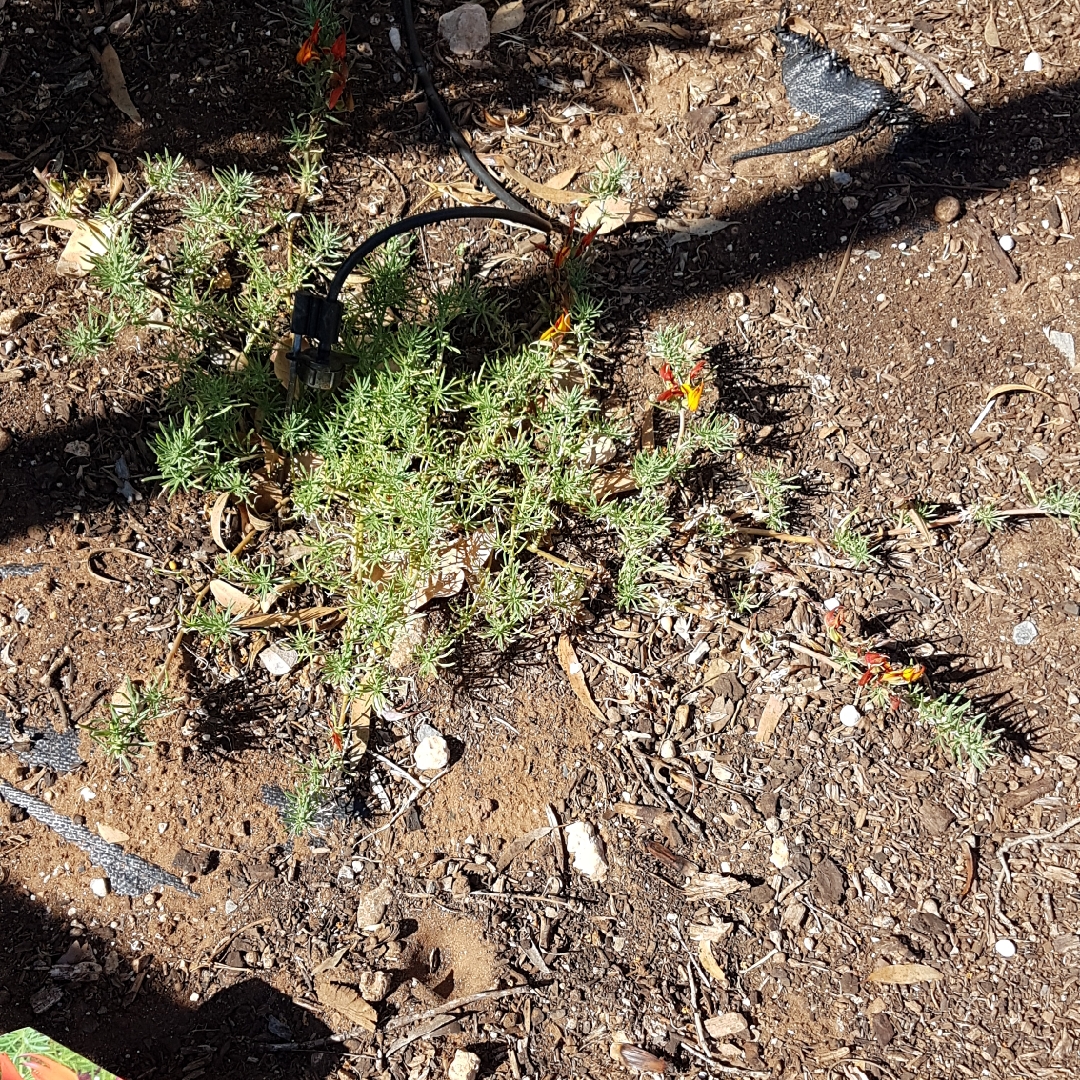
Lotus Maculatus 'Red Flash'
Lotus Vine 'Red Flash'
Lotus can be annuals, perennials, deciduous or evergreen tender tropical shrubs. They have whorls of soft, silver-grey, needle-like leaves, and 1" long pea-like flowers that can be solitary or clustered, and which resemble a parrot's beak - hence one of the common names. Lotus maculata 'Red Flash' is usually grown as an annual plant that has a creeping or trailing habit, with silver-grey foliage and orangey-red, flame coloured "parrot-beak" flowers.
Contributed by @lizigw
-
Full sun
-
Occasional watering
-
Not Frost hardy
-
Moist and free draining
Common name
Lotus Vine 'Red Flash'
Latin name
Lotus Maculatus 'Red Flash'
type
Climber
family
Fabaceae
ph
6.6 - 8.5 Acid - Neutral
Plant & bloom calendar
-
Best time to plant
-
When the plant will bloom
full grown dimensions
 0.35 M
0.20 M
0.35 M
0.20 M
Lotus Maculatus 'Red Flash'
Lotus can be annuals, perennials, deciduous or evergreen tender tropical shrubs. They have whorls of soft, silver-grey, needle-like leaves, and 1" long pea-like flowers that can be solitary or clustered, and which resemble a parrot's beak - hence one of the common names. Lotus maculata 'Red Flash' is usually grown as an annual plant that has a creeping or trailing habit, with silver-grey foliage and orangey-red, flame coloured "parrot-beak" flowers.
Flowering
From Mid Spring TO Early Summer
The exotic-looking flowers appear from mid Spring through to early Summer
Planting
From Early Spring TO Mid Spring
Plant in moist, free-draining, neutral or alkaline soil in sunny site that is shaded from mid Summer sun. Makes a good container or hanging-basket plant. In cooler climes can be grown as an annual - or will need to be brought indoors when the weather cools
Propagating by cuttings
From Late Spring TO Early Summer
Stem tip cuttings are taken in the spring/early summer from this years growth. Cleanly cut just below a leaf joint, up to a 10cm tip, remove lower leaves and pinch out the tip, dip into hormone compound and place them around the edge of a pot filled with cutting compost., water well. Place a plastic bag over the pot to give humidity, the bag must be removed a couple of times a week to ventilate, put the pot in a light spot but avoid direct sunlight.









